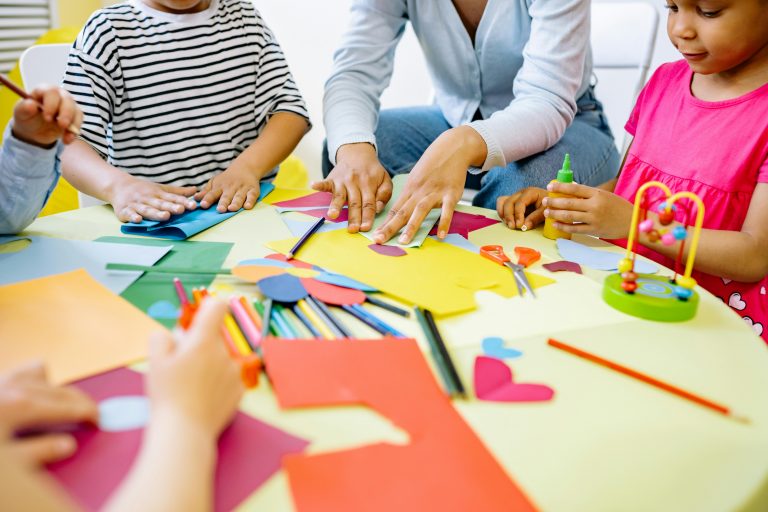People think being an artist is so easy. After all, they follow their passions and create whatever looks or feels good compared to others who must deal with jobs they hate while trying to earn a living. But this is not the case. Artists also face a rollercoaster of human problems unique to their circumstances and not easily understandable to the usual office worker or laborer. From a lot of self-doubts brought on by society to financial issues that come with a non-essential career, artists can struggle while balancing beauty and madness. If you’re someone who wants to understand the challenges they face, are gauging if you’re ready to commit to this career, or are an artist and want some solutions for your troubles, read on to learn about the common human problems of being an artist.
Finding Inspiration

Finding the right inspiration is one of the most human problems every artist must face. You want to come across that spark that brings out your creativity, and most people cannot find it no matter where they look. But the thing is, you can find it anywhere and everywhere. Like in the movies, many think you must go on a life-changing retreat to find your core as an artist. While it can help, it won’t guarantee inspiration.
Instead, look at the things around you because inspiration is sometimes hiding right under your nose. You can find many things to spark your creative process, from people walking on the streets to plants chilling in your garden. Try to dine at local restaurants and observe humans interacting, talking, and eating. You can walk in a park and hear the birds chirp, the wind blow, and the grass rustle. Getting in touch with the world may be the key to unlocking your artistry.
Conversely, you may find disconnecting more beneficial. Taking a break from your art piece can help you look at the bigger picture and stop criticizing your work. Let your brain recharge with self-care activities like binge-watching a TV show, indulging in guilty pleasure snacks, or taking a warm bath.
You may also get inspiration by collaborating with another artist. Letting your creative brain cells work together can help you find something to elevate your present work. Some artists think they have to work alone in their journey, but the best ideas usually sprout from artistic alliances. With another brain searching for that same spark, you’ll get a fresh perspective and reignite your flame as a creative.
Time Management
You should never rush art, or so they say. But in reality, art is a product of human activity, which is always bound by time. Deadlines are always there, especially when offering your artistic talent as a service. Although your passion for creating can take up most of your life, you must also deal with other human problems that keep you from staying in the studio 24/7. There’s only so much time in a day for art that it feels difficult to balance career and personal life.
If you’re struggling with time management, you should first set strict boundaries. Especially if creating art is your job, you must ensure it doesn’t take over every aspect of your life. You want art to enhance your relationships, not break them. If your husband or wife is considering hiring a divorce attorney because you no longer spend time with them, you’re doing something wrong. Try to limit art creation to a few hours a day, just like many office workers only work from 8 to 5. This lets you have a personal life outside your career.
You should also set your priorities straight. If you’re neglecting your craft by scrolling through your for three hours straight, it might be time to turn the phone off whenever you get to the studio or workroom. It might also be a good idea to set deadlines to practice self-discipline. Break down large projects into smaller tasks, and set aside time for self-care. Of course, you must stay consistent with your schedule to stay productive.
Touring Challenges
Although not one of the artists’ most common human problems, touring challenges can be big issues for more renowned figures or frequently-traveling creatives. Artists who perform for large crowds on stage usually have to live life on the road as they travel from gig to gig. Watching them entertain people looks like a dream, but it can be depressing behind the scenes.
Touring is part of some artistic professions, so being prepared is crucial. While booking gigs, coordinating travel, and practicing performances, planning other essential logistics will help you stay comfortable. For one, booking a hotel in every city can be a hassle, so many artists invest in trailer rental services. With a solid playlist, plenty of snacks, and some games, life on the road is not so bad.
However, the real challenge lies in living with the same people through the stress of traveling frequently. Spending hours cooped up in a small trailer can get to some people. If you’re one of them, try to find distractions to prevent getting on each others’ nerves. Try to connect with other people through online apps, pick up a new hobby, or get out and breathe fresh air more frequently. You’re ultimately investing in your sanity while maintaining a creative relationship.
Feelings of Isolation

Being an artist can be lonely. Many people stay in a room creating something special while keeping it out of the public eye for later viewing. This can isolate you from society and make you feel empty inside. Yes, some artists use this feeling to create a masterpiece, but it doesn’t work for everyone. You can’t always fill the void in you with paint and canvas, hoping to make the loneliness go away. You must open the blinds, let the light in, and find solutions to your human problems.
Don’t go to social media if you feel isolated. The endless feed of funny videos, filtered photos, and cute animals will occupy your mind until you get tired and have to log off, only to be confronted by loneliness again. Instead of connecting with people virtually, consider going out. Nothing beats chatting with real people in their unfiltered state. Although it can be awkward initially, you’ll find it more filling than keeping everything to yourself.
You should also find something more fun to do during your downtime. Many people think you should focus on your art to stay productive, but productivity also includes caring for your mental state. Pick up a sport, do something adventurous, go to a concert. You don’t have to incorporate your loneliness in your art. Instead, find happiness and use that as much as you want.
Financial Struggles
One of the most dreaded human problems artists must deal with is finances. Making art seems glamorous, but not everyone thrives while creating masterpieces. Many of them live off of ramen noodles, dodging calls from debt collectors and declining party invites from friends. This kind of life can demotivate many aspiring creatives and turn them into more financially stable bankers, doctors, and engineers.
But if you want to pursue your dreams without declaring bankruptcy, you must be ready to manage your money as best as you can. Budgeting is your best friend if you’re not born rich. Try to spend only on the essentials. If you look in the right places, you can usually find great deals on these items. For example, weekend sales and online coupons can significantly reduce your expenses. You can also eliminate other costs like eating out, luxury clothes, and unused subscriptions.
However, don’t wallow in self-pity, either. You don’t have to sacrifice all comfort and stability for your art. You can still make ends meet with some good financial decisions. It’s okay to go out with friends and enjoy life when you have some extra cash. The important thing is to set aside enough money for your necessities, and you’ll be okay.
Securing Gear and Supplies
You also need the right tools and supplies to create good art. Paints, brushes, cameras, instruments, and inks are necessary for creating masterpieces. However, these things can be difficult to obtain if you lack the resources, are very picky with your supplies, or cannot find them in your location.
If possible, try to find alternatives for each item. Whether buying a cheaper brand or finding a local supply instead of a foreign item, you can usually get similar items for less money or effort. You should also consider conserving your supplies to minimize how often you order new ones. Of course, there are deals when ordering things in bulk, especially online shops.
Another one of those very real human problems for some artists is storing expensive gear and supplies safely. For example, when working with precious stones for jewelry, it’s essential to secure your materials in a space where no one can just enter and take them. One good way to do this is by working with a local locksmith. Aside from their most common task of opening locked locks, they can also install more secure locks and mechanisms to improve the security of your storage area.
Work-Life Balance

Some assume that artists have the best work-life balance because art can more easily integrate into personal life without too much traction. However, even artists can struggle with these kinds of human problems. Working as an artist can be more difficult to manage as art can take over your life without warning. Deadlines, gigs, and occasional breakdowns can also hinder your creative process and daily life.
To ensure a work-life balance, schedule regular self-care activities that don’t involve your specific art form. For example, if you usually work with clay, you can go to the spa and try various treatments, except a mud facial. It’s a bit farfetched, but it helps prevent you from thinking about work. You can also try one of those satisfying rug cleaning sessions where you remove dirt from rugs if you’re a landscaper who adds dirt to yards.
You should also practice saying no if you’re always deep in work. If you have a manager who keeps on giving you work, consider saying no occasionally to focus on yourself. If you have many clients hiring you for commissions, try going on a hiatus to create a window of time for relaxation before you take on the next set of projects. By creating a clear line between your work and personal life, you can successfully balance the two without going crazy.
Storage Space
Many artists work in creative chaos, so they describe their workspace as an ‘organized mess.’ But having all this clutter in your space can be stressful, especially if you don’t have a working system for organization and can no longer find the things you need in your pile of stuff. Invest in some proper storage space to ensure you can work in peace.
Depending on the kind of art that you create, you can benefit from various storage solutions. For example, containers with dividers can be enough for artists who use multiple brushes and tubes of paint. A large cabinet may be more appropriate for fashion designers who keep rolls and rolls of fabric. However, for artists who create life-size sculptures, even a container crate may be too small when storing a collection of statues.
Smaller storage solutions may also benefit you. For one, having more shelves will allow you to use more tools simultaneously without putting them back in storage every time. You can also repurpose everyday items to add more organization to your studio. Maybe you can use a shoe rack and an old suitcase for raw materials? With some creativity, you can easily arrange your workspace and eliminate clutter to improve your art process. Just make sure to find storage solutions that fit the size of your space to avoid a cramped studio.
Burnout
Burnout is real for every artist. It’s like you’re running at full speed and then hitting a brick wall. You feel drained, uninspired, and unmotivated. As one of the most common human problems, it’s no wonder many artists who rely on continuously producing innovative and beautiful art pieces fail in their careers. As mentioned before, taking a break is one of the best things you can do. It lets your mind breathe and recuperate from all the brainstorming and creative fevers.
If you must keep creating art to sustain yourself, try working with new things. Instead of doing the same thing over and over again, change things up once in a while. If you’re a sculptor who works with marble slabs, consider using cedar lumber for a new challenge. If you’re a singer in a rock band, try incorporating a completely different genre, like country or jazz, into your music style. Remember that your art is an extension of you, so if you burn yourself out trying to create something, the product will also feel like that.
Self-Doubt

Finally, self-doubt is everyone’s worst enemy, not just artists. This voice in your head will keep bringing you down by repeatedly saying, ‘You’re not good enough.’ You’ll doubt everything you do and start seeking validation from others, which is never a good idea because art is subjective. Know that you’re not alone in this struggle; we’re all just trying to get by.
When self-doubt is trying to destroy your art and self-worth, focus on the good things about yourself. Turn negative things into positive things. For example, if you think your new painting looks too gloomy, tell yourself this will resonate with people in the same gloomy mood. Instead of offering tattoo removal for a client you did a less-than-stellar tattoo on, offer to create new additions to improve the old one. The best way to silence self-doubt is to keep pushing yourself toward positivity.
The life of an artist is an unpredictable journey littered with various human problems, some unique to them and some common to all people, from time management challenges to social isolation. However, finding inspiration symbolizes hope for a thriving future. Every artist will have struggles, so you’ll never be alone in this difficult journey to artistic success. By staying resilient and persevering through all hardships, you can prosper and show the world your creativity and talent.




